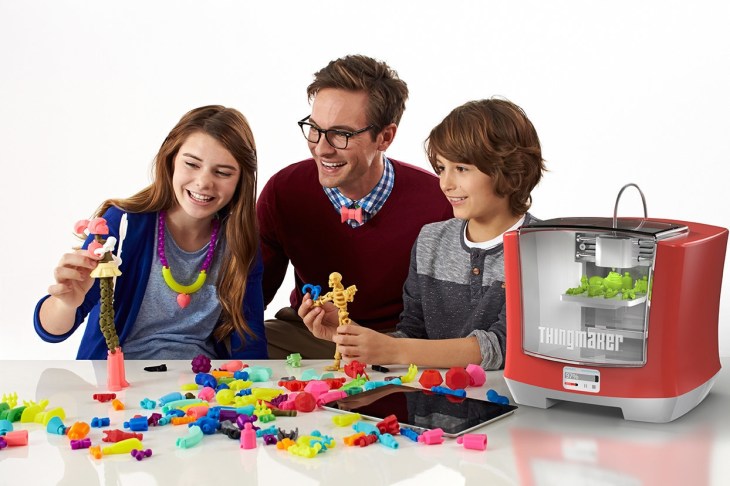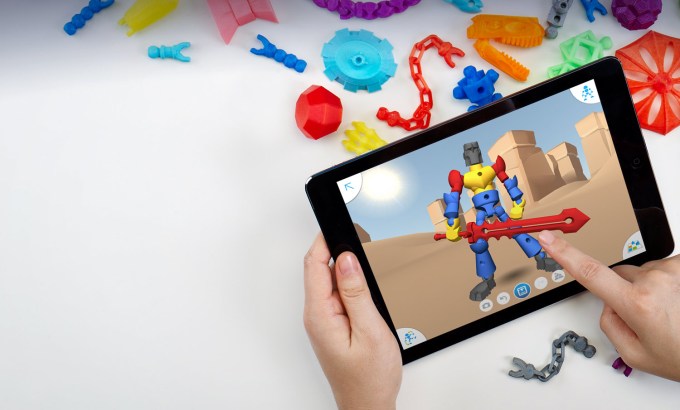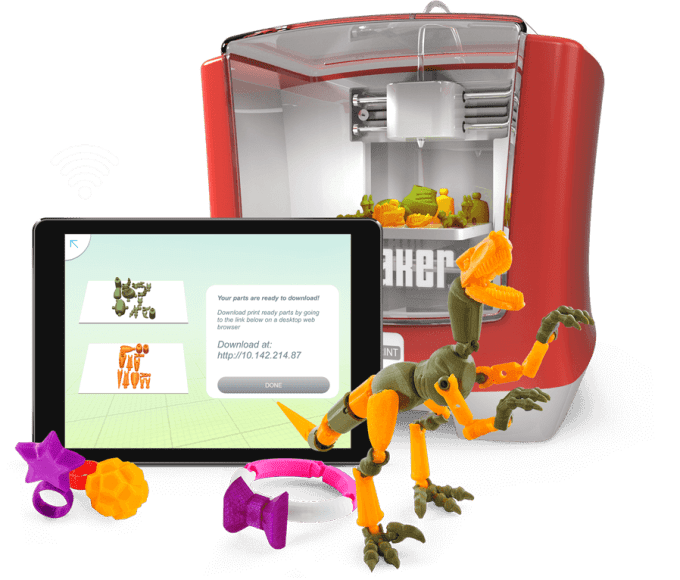Children Can Now Create Their Own Toys Using a 3D printer!
 At New York's Toy Fair trade program in 2016, Mattel revealed its new, $300 3D Printer, the "ThingMaker," which permits kids to print their own toys in the house. The gadget operates in conjunction with a 3D printing app established in partnership with Autodesk that offers a basic user interface for developing products that can then come to life by means of Mattel's ThingMaker in addition to with other basic 3D printers currently on the marketplace.
At New York's Toy Fair trade program in 2016, Mattel revealed its new, $300 3D Printer, the "ThingMaker," which permits kids to print their own toys in the house. The gadget operates in conjunction with a 3D printing app established in partnership with Autodesk that offers a basic user interface for developing products that can then come to life by means of Mattel's ThingMaker in addition to with other basic 3D printers currently on the marketplace.
The accompanying app is really crucial to making Mattel's 3D printing experience more accessible to a wider audience.
While there are affordably priced 3D printers available today, the software that works with them can often have a learning curve that can hinder adoption. With the brand-new application, live now on iOS and Android, the objective was to make it easy for anybody to design their own toys-- even younger kids.

Autodesk was charged with structure this app which early testers, including those at Toyland, have actually already described as "easy," "simple to navigate" and "ridiculously user-friendly."
Called ThingMaker Design, the app consists of a range of integrated character design templates and easy-to-use tutorials that help newbies start. But it also allows for developing characters from scratch, as soon as kids master things. The toys can be customized with various colors and textures, and will bend and twist in the app so you can get a feel for how they'll work after they've been printed. The developments can be saved as images to the mobile device's Camera Roll, or submitted to Google Drive or Dropbox.
When a design is complete, the app lets you export the STL print files wirelessly to your at-home printer, whether Mattel's or otherwise.
The idea isn't simply to print an item and be done-- rather, kids will print parts that can be put together to form bigger productions, like dolls, robots, dinosaurs, scorpions, skeletons, bracelets or necklaces, for example.

The physical parts are printed in batches then assembled through ball-and-socket joints that snap together. This process can take anywhere from 30 minutes for a small product, up to over night (e.g. 6 to 8 hours) for a larger toy.
Mattel states its ThingMaker 3D will utilize a difficult PLA filament, but also hasn't yet announced the colors that will be offered. According to reports from the Toy Fair, however, there were some 2 dozen colors on display screen. A representative stated the company might launch other products in the future.
When printing starts, the printer's door will automatically lock for safety's sake, but kids can see the process through the clear window on the front. In addition, the printing head will likewise retract when not in use, which will help to keep kids safe from burning their fingers by inadvertently (or intentionally) touching the heated part.
While printing out toys is something that looks like it would attract littler kids-- Mattel covers itself from a liability perspective by saying the device is "created for users ages 13 and up," USA Today reports. But the simplicity of the app and printer's style combined with its function including toy printing will likely see moms and dads of younger kids bringing the device into their homes.
If the name "ThingMaker" rings a bell, it's because it references Mattel's initial at-home maker device from the 1960's. Back then, the company worked to influence kids' creativity by letting them develop toys like flowers or "Creepy Crawlers" by pouring liquid plastic-like product called Plastigoop into molds that were heated up then cooled.
Now the business says it has reimagined the ThingMaker experience for the 21st century.
"In today's digital age, it's more vital than ever for households to go beyond the digital world and make their concepts real," said Aslan Appleman, senior director, at Mattel in a statement. "ThingMaker presses the limits of imaginative play, providing families numerous methods to tailor their toys and let their creativity run wild."
As a toy brand, Mattel has actually been fairly forward-thinking when it concerns combining play and digital devices. In addition to the ThingMaker, the company likewise revealed a new View-Master gadget at the Toy Fair powered by Google Cardboard.
